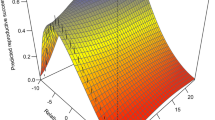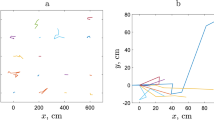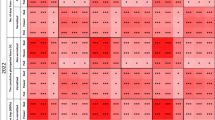Abstract
PREVIOUS reports of the life cycle of the slug, Agriolimax reticulatus (Müller)1,4, have maintained that there are two generations a year. A spring generation hatches in March to May and grows during the summer to give rise to an autumn generation which hatches in September to October and this grows during the winter to produce the next spring generation. In a recent study at Cambridge this pattern seemed to be confirmed. Outdoor cultures of A. reticulatus were kept on soil with adequate food and moisture and laid eggs within 5–7 months of hatching.
This is a preview of subscription content, access via your institution
Access options
Subscribe to this journal
Receive 51 print issues and online access
$199.00 per year
only $3.90 per issue
Buy this article
- Purchase on SpringerLink
- Instant access to full article PDF
Prices may be subject to local taxes which are calculated during checkout
Similar content being viewed by others
References
Bett, J. A., Proc. Zool Soc. Lond., 135, 559 (1960).
Harding, J. P., J. Mar. Biol. Assoc., 28, 141 (1947).
Hunter, P. J., Malacologia, 6, 379 (1968).
Hunter, P. J., Malacologia, 6, 369 (1968).
Author information
Authors and Affiliations
Rights and permissions
About this article
Cite this article
HUNTER, P., SYMONDS, B. The Leap-frogging Slug. Nature 229, 349 (1971). https://doi.org/10.1038/229349a0
Received:
Revised:
Issue date:
DOI: https://doi.org/10.1038/229349a0
This article is cited by
-
Mass Structured Systems with Boundary Delay: Oscillations and the Effect of Selective Predation
Journal of Nonlinear Science (2012)
-
Biology of slugs (Agriolimacidae and Arionidae: Mollusca) in New Zealand hill country pastures
Oecologia (1991)



